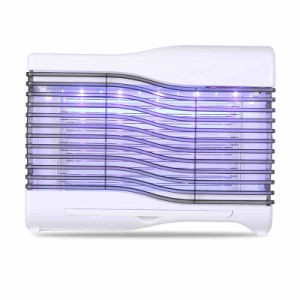Indoor Bug Zappers Anti-Mosquito Bulb
Product description
The comparison between traditional black light lamp design and fluorescent lamps only has a few important changes. Fluorescent lamps generate light by passing an electric current through a tube filled with inert gas and a small amount of mercury. When electrified, mercury atoms emit energy in the form of visible photons. They emit some visible photons, but most of them are emitted in the ultraviolet wavelength range. The wavelength of ultraviolet light is too short to be seen. Fluorescent lamps must convert this energy into visible light. To achieve this goal, a phosphorus coating was applied on the outside of the tube.

There are a wide variety of mosquito control lamps on the market, with only differences in electrical power and the number of UV fluorescent lamps. The other differences are mainly in appearance. Usually, it is classified based on power and the number of tubes, which is the common and typical appearance of electronic mosquito control lamps. According to power classification, mosquito control lamps mainly come in various specifications such as 2, 3, 4, 5, 8, 10, 15, and 20W. Most households use mosquito control lamps of 2-8W, with a corresponding room area of approximately 10-20 square meters. Classified by the number of UV tubes, they can usually be divided into single tube and double tube types, and there are also products with more than 2 tubes, but it is rare in the market. Most households use single tube mosquito lamps; The dual tube mosquito control lamp is suitable for places such as restaurants, hotels, offices, and larger living rooms in families. The electric power of double tube mosquito control lamps is usually above 6W.




Recommended products


